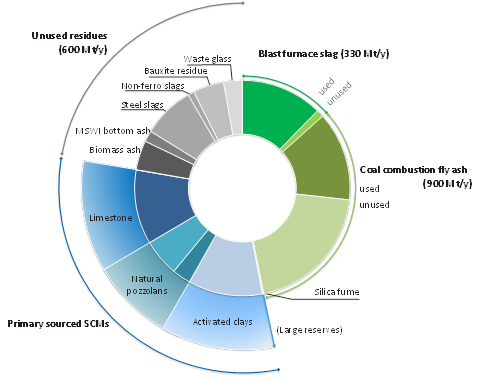Assessing, Understanding and Unlocking Supplementary Cementitious Materials
DOI:
https://doi.org/10.21809/rilemtechlett.2016.12Keywords:
Supplementary Cementitious Material, Pozzolan, Blended Cement, Beneficiation, ActivationAbstract
The partial replacement of Portland clinker by supplementary cementitious materials (SCM) is one of the most popular and effective measures to reduce both costs and CO2 emissions related to cement production. An estimated 800 Mt/y of blast furnace slags, fly ashes and other materials are currently being used as SCM, but still the cement industry accounts for 5-8% of global CO2 emissions. If no further actions are taken, by the year 2050 this share might even rise beyond 25%. There is thus a clear challenge as to how emissions will be kept at bay and sustainability targets set by international commitments and policy documents will be met.
Part of the solution will be a further roll-out of blended cements in which SCMs constitute the main part of the binder to which activators such as Portland cement are added. Since supply concerns are being raised for conventional high-quality SCMs it is clear that new materials and beneficiation technologies will need to step in to achieve further progress. This paper presents opportunities and challenges for new SCMs and demonstrates how advances towards more powerful and reliable characterisation techniques help to better understand and exploit SCM reactivity.

Downloads
Published
How to Cite
Issue
Section
License
Authors retain copyright of the articles published in RILEM Technical Letters and grant the journal the right of first publication with open access. The work is simultaneously licensed under Creative Commons Attribution 4.0 International License (CC BY 4.0) that allows others to share and adapt the work under the following terms: 1) a proper attribution is given in a form of a reference to the original work's authorship and initial publication in RILEM Technical Letters (bibliographic record with the DOI link); 2) a link to the license is provided; 3) the changes (if any) are indicated.









